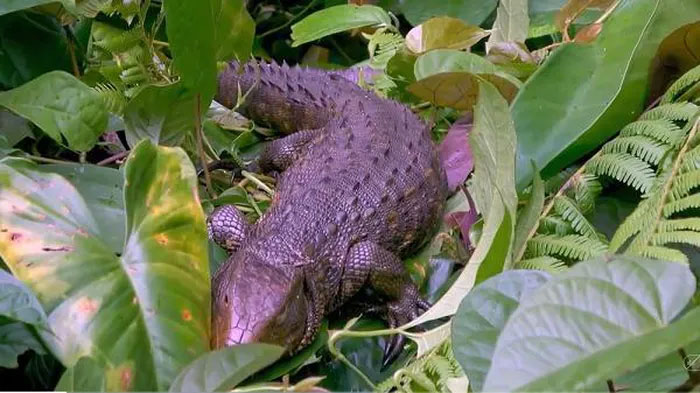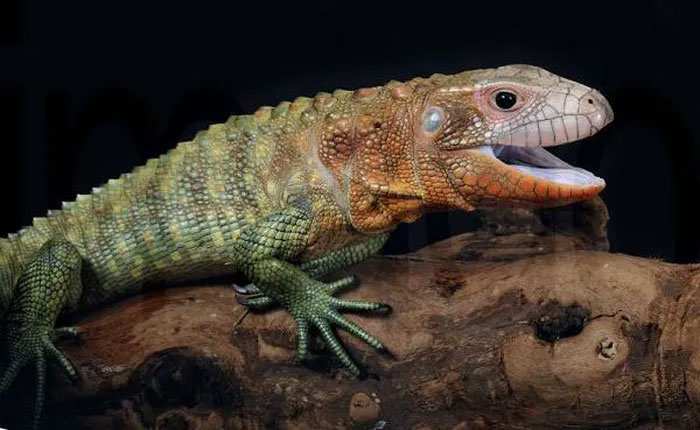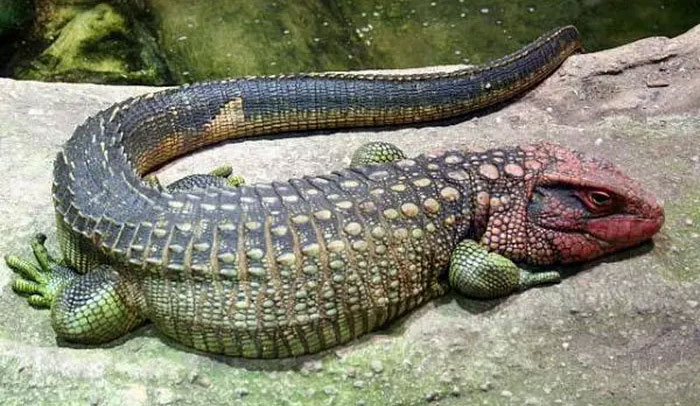The Caiman Lizard may look similar to a crocodile, but in reality, it is not one. To date, scientists still have limited information about this species.
The body of this creature features sharp ridges extending all the way to its tail, with claws as sharp as those of a crocodile. In fact, it is a Caiman Lizard (scientific name: Dracaena guianensis).

Caiman Lizard.
Not only does it resemble a crocodile in appearance, but the Caiman Lizard also possesses a third eyelid that protects its eyes while swimming underwater, similar to crocodiles. However, scientists still know very little about this peculiar lizard species.
The Caiman Lizard is a species belonging to the genus Dracaena found in northern South America. They are a semi-aquatic species, and their name derives from their heavy, bulky body resembling that of a Caiman crocodile.

Caiman Lizard spends most of its time submerged in water.
The Caiman Lizard can grow up to 1.2 meters long and weigh up to 4.5 kg. Its head is quite bulky and usually colored red or orange. They have a long, flattened tail that aids in swimming. The body of the Caiman Lizard closely resembles that of a crocodile, typically displaying bright green coloration with some lighter dark green stripes.
The Caiman Lizard spends most of its time submerged in water. At night, they often hide in bushes and dense vegetation. Their jaws are highly muscular, enabling them to break the shells of snails, shrimp, and freshwater clams, which are also their preferred food sources.
During the day, they typically bask in the sun on branches or rocks protruding from the water. If threatened, the Caiman Lizard will quickly retreat into the water.

They have a long, flattened tail that aids in swimming.
In the past, during the 1970s, Caiman Lizards were often hunted or kept in captivity for their skin. However, in recent years, they are commonly kept as pets, with prices in the U.S. reaching up to $700 each.
They can even consume fruits such as kiwi, bananas, mangoes, papayas, and red bananas, in addition to eating small creatures like worms, snails, and crickets.


















































